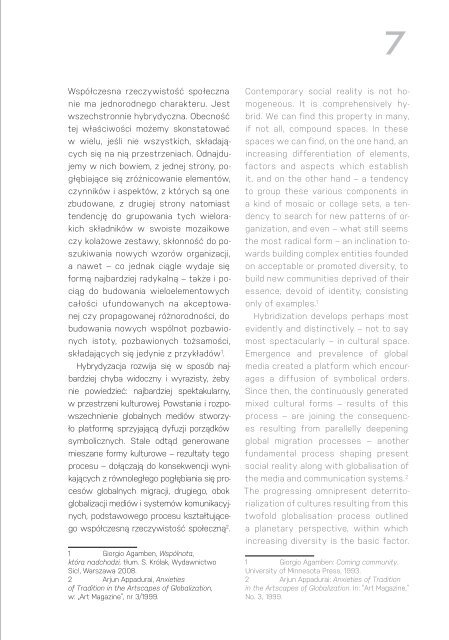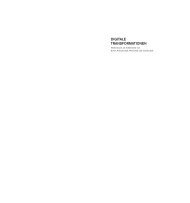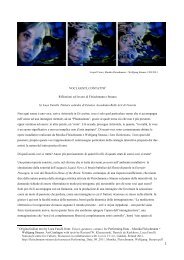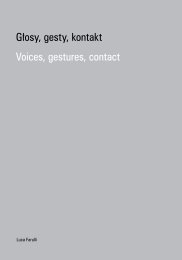Performing Data | Monika Fleischmann + Wolfgang Strauss
Performing Data is a review of Monika Fleischmann´s and Wolfgang Strauss´artistic body of work and a catalogue of their exhibition in Poland 2011. It presents works from Virtual Reality (Home of the Brain) up to Mixed Reality (Murmuring Fields) from Fluid Interface (Liquid Views) up to Floating Interface (Medienfluss) and texts by Ryszard W. Kluszczynski, Derrick de Kerkhove, Luca Farulli. Monika Fleischmann and Wolfgang Strauss from the German Fraunhofer research institute show us an intersection of the body and immaterial digital data. Immersion in data flow causes productive moments of disturbance and suspension, and consequently – a feeling of real physical presence. Fleischmann, Monika; Strauss, Wolfgang: Performing Data | Performowanie danych. National Centre for Culture, Warszawa 2011 in collaboration with Laznia CCArt, Gdańsk, Poland 2011 ISBN 978-83-61587-55-2 (en/pl) http://artline-southbaltic.eu/de/event/performing-data/
Performing Data is a review of Monika Fleischmann´s and Wolfgang Strauss´artistic body of work and a catalogue of their exhibition in Poland 2011. It presents works from Virtual Reality (Home of the Brain) up to Mixed Reality (Murmuring Fields) from Fluid Interface (Liquid Views) up to Floating Interface (Medienfluss) and texts by Ryszard W. Kluszczynski, Derrick de Kerkhove, Luca Farulli.
Monika Fleischmann and Wolfgang Strauss from the German Fraunhofer research institute show us an intersection of the body and immaterial digital data. Immersion in data flow causes productive moments of disturbance and suspension, and consequently – a feeling of real physical presence.
Fleischmann, Monika; Strauss, Wolfgang: Performing Data | Performowanie danych. National Centre for Culture, Warszawa 2011 in collaboration with Laznia CCArt, Gdańsk, Poland 2011 ISBN 978-83-61587-55-2 (en/pl) http://artline-southbaltic.eu/de/event/performing-data/
Create successful ePaper yourself
Turn your PDF publications into a flip-book with our unique Google optimized e-Paper software.
Współczesna rzeczywistość społeczna<br />
nie ma jednorodnego charakteru. Jest<br />
wszechstronnie hybrydyczna. Obecność<br />
tej właściwości możemy skonstatować<br />
w wielu, jeśli nie wszystkich, składających<br />
się na nią przestrzeniach. Odnajdujemy<br />
w nich bowiem, z jednej strony, pogłębiające<br />
się zróżnicowanie elementów,<br />
czynników i aspektów, z których są one<br />
zbudowane, z drugiej strony natomiast<br />
tendencję do grupowania tych wielorakich<br />
składników w swoiste mozaikowe<br />
czy kolażowe zestawy, skłonność do poszukiwania<br />
nowych wzorów organizacji,<br />
a nawet – co jednak ciągle wydaje się<br />
formą najbardziej radykalną – także i pociąg<br />
do budowania wieloelementowych<br />
całości ufundowanych na akceptowanej<br />
czy propagowanej różnorodności, do<br />
budowania nowych wspólnot pozbawionych<br />
istoty, pozbawionych tożsamości,<br />
składających się jedynie z przykładów 1 .<br />
Hybrydyzacja rozwija się w sposób najbardziej<br />
chyba widoczny i wyrazisty, żeby<br />
nie powiedzieć: najbardziej spektakularny,<br />
w przestrzeni kulturowej. Powstanie i rozpowszechnienie<br />
globalnych mediów stworzyło<br />
platformę sprzyjającą dyfuzji porządków<br />
symbolicznych. Stale odtąd generowane<br />
mieszane formy kulturowe – rezultaty tego<br />
procesu – dołączają do konsekwencji wynikających<br />
z równoległego pogłębiania się procesów<br />
globalnych migracji, drugiego, obok<br />
globalizacji mediów i systemów komunikacyjnych,<br />
podstawowego procesu kształtującego<br />
współczesną rzeczywistość społeczną 2 .<br />
1 Giorgio Agamben, Wspólnota,<br />
która nadchodzi, tłum. S. Królak, Wydawnictwo<br />
Sic!, Warszawa 2008.<br />
2 Arjun Appadurai, Anxieties<br />
of Tradition in the Artscapes of Globalization,<br />
w: „Art Magazine”, nr 3/1999.<br />
Contemporary social reality is not homogeneous.<br />
It is comprehensively hybrid.<br />
We can find this property in many,<br />
if not all, compound spaces. In these<br />
spaces we can find, on the one hand, an<br />
increasing differentiation of elements,<br />
factors and aspects which establish<br />
it, and on the other hand – a tendency<br />
to group these various components in<br />
a kind of mosaic or collage sets, a tendency<br />
to search for new patterns of organization,<br />
and even – what still seems<br />
the most radical form – an inclination towards<br />
building complex entities founded<br />
on acceptable or promoted diversity, to<br />
build new communities deprived of their<br />
essence, devoid of identity, consisting<br />
only of examples. 1<br />
Hybridization develops perhaps most<br />
evidently and distinctively – not to say<br />
most spectacularly – in cultural space.<br />
Emergence and prevalence of global<br />
media created a platform which encourages<br />
a diffusion of symbolical orders.<br />
Since then, the continuously generated<br />
mixed cultural forms – results of this<br />
process – are joining the consequences<br />
resulting from parallelly deepening<br />
global migration processes – another<br />
fundamental process shaping present<br />
social reality along with globalisation of<br />
the media and communication systems. 2<br />
The progressing omnipresent deterritorialization<br />
of cultures resulting from this<br />
twofold globalisation process outlined<br />
a planetary perspective, within which<br />
increasing diversity is the basic factor.<br />
1 Giorgio Agamben: Coming community.<br />
University of Minnesota Press, 1993.<br />
2 Arjun Appadurai: Anxieties of Tradition<br />
in the Artscapes of Globalization. In: “Art Magazine,”<br />
No. 3, 1999.







